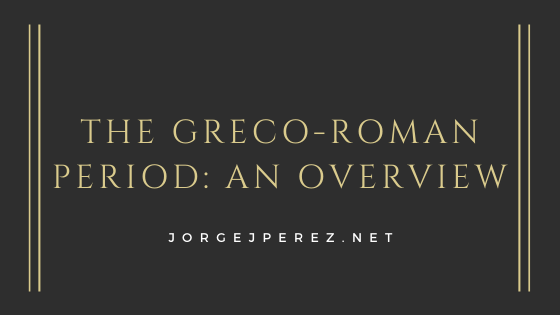Before analyzing Egypt in the Greco-Roman Period, it is necessary to examine the political landscape of the kingdom before Greek and Roman rule. Prior to 332 BC, Egypt was ruled by the repressive Achaemenid Empire of Persia. When the Macedonian king Alexander the Great began his conquests of Achaemenid territory, he took over Egypt from Persian rule. Rather than regarding Alexander as a conqueror, the people of Egypt greeted Alexander and his army of Greek warriors as liberators. The reason for Egypt’s harmonious reception to Greek rule lay partly in Alexander’s embrace of Egyptian religion. Traveling to the Oracle of Amun, Alexander was declared the son of Amun and the chosen one of Ra.
When Alexander left to continue his conquest of Persian territory, he left his generals in charge of Egypt. Following Alexander’s death, the general Ptolemy gained control of Egypt. Ptolemy is regarded as one of the preeminent pharaohs of ancient Egypt, founding what historians now call the Ptolemaic Dynasty. The Ptolemaic Dynasty lasted for three centuries and saw the establishment of Alexandria as the kingdom’s new capital. The time of the Ptolemaic pharaohs was marked by an increase in artistic and scientific output as the famed Great Library of Alexandria became the center of learning in the ancient world.
The Ptolemaic Dynasty ended in 30 BC when Cleopatra IV was pharaoh. During Cleopatra’s rule, the Roman Emperor Augustus invaded Egypt and turned the kingdom into a province for Rome. Roman rule saw Egypt serve as the breadbasket for the Roman army, with the fertile Nile Delta providing grain for Roman soldiers in their conquests. By far the biggest cultural change for Egypt in the Roman era was the province’s adoption of Christianity as its main religion, a change spurred on by the Emperor Constantine. Roman rule in Egypt continued well after the fall of the Western Roman Empire in 476 as Constantinople became the administrative center of the empire. Despite this reprieve, Roman influence in Egypt would be shattered in 641, when Egypt was invaded by the Rashidun Caliphate.
Greco-Roman Timeline
Greece
The Minoans
This Bronze Age civilization, famous for the Minotaur labyrinth, ruled Crete from roughly 2700-500 BC.
The Mycenaeans
The Mycenaean period occurred from 1600-1100 BC producing many works of renown ancient Greek literature.
The Trojan War
Achaean Greeks declared war on Troy when its ruler, Paris, stole the wife of the Spartan king, Menelaus. The war lasted from 1194-1184 BC.
Homer’s Epics
Homer’s influence ran from 850-750 BC. His epics, the Iliad and the Odyssey, continue in popularity.
Hesiod
From 750-650 BC, Hesoid’s poetic era brought about the birth of didactic poetry.
Rome
Seven Kings
Legend says that Rome was founded by Romulus in 753 BC. Six kings followed with the last overthrown in 509 BC.
The Roman Republic
Rome
operated as a republic from 509-27 BC headed by 2 elected consuls and a senate.
Virgil
Virgil wrote the Aeneid between 20-19 BC. This epic follows the Roman ancestor Aeneas’ journey from Troy to Italy.
Augustus
From 27 BC to 14 AD, Emperor Augustus brought about the Pax Romana. This period of peace lasted 200 years.
The Colosseum
Constructed between in 72-80 AD, the Colosseum hosted gladiator fights, replica sea battles and other entertainment. The building could hold up to 50,000 spectators.
Titus
Titus reigned from 70-81 AD, the first emperor to succeed his father to the throne.
Trajan
Roman territory was largest under Emperor Trajan from 98-117 AD. To honor him, Trajan’s Column was built in 113-114 AD.
Commodus
Commodus ruled as co-emperor alongside his father Marcus Aurelius in 177 AD. He continued for 12 more years after his father died in 180 AD.
Philippus Arabs
Philippus Arabs ruled from 244-249 AD. His reign brought peace with the Sassanid Empire and saw the celebration of the Roman millennium.
Constantine
Ruling from 306-337 AD, Constantine was the first emperor to convert to Christianity transforming Rome.

